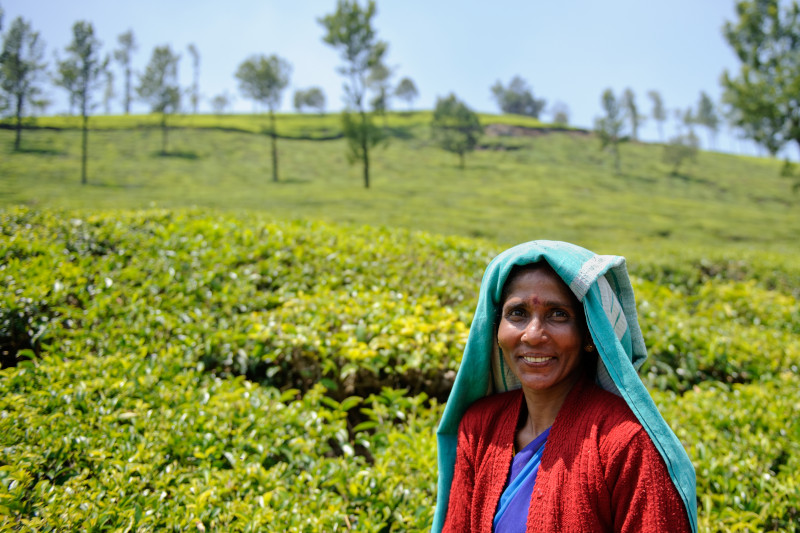Cohesive societies, competitive economies: Tackling remaining poverty in Asia and the Pacific
October 13, 2023

Although Asia and the Pacific has made enormous advances in reducing poverty, millions remain trapped in poverty of various kinds.
Asia and the Pacific is often singled out as a star performer in terms of poverty reduction. No statistic illustrates this better than the region’s monumental achievement of pulling 1.5 billion out of extreme poverty within just two generations.
But a stark reality lies underneath: millions remain trapped in poverty of various kinds.
Here’s what we know - 185 million people in live in extreme poverty, scraping by on under US$2.15 a day, and six million live in ultra-poverty, earning or spending less than half that amount. These numbers are not even up to date – they’re as of 2019 - but given the pandemic and the shocks that followed they likely represent a minimum rather than a maximum.
The picture becomes bleaker when we widen the lens. One billion people are "societally poor”, with consumption below half that of the median consumer. And half a billion are “multidimensionally poor”, facing multiple simultaneous deprivations in education, health and living standards. All of this is more numbers, until we put faces and stories to the millions.
A turbulent landscape for poverty reduction
The International Day for the Eradication of Poverty offers the occasion to ask ourselves how we can tackle the remaining last miles of poverty at a time when we are facing new headwinds that could limit or even reverse our progress.
This is one of the key topics of our upcoming 2024 Regional Human Development Report for Asia and the Pacific. This report, to be launched in November, takes stock of the region’s state of human development. It also proposes new directions for policy as the region faces a large unfinished agenda and does so looking also at a potentially more turbulent future.
More turbulence? A triple whammy of risk clusters is before us - existential threats arising from climate devastation, wars and pandemics; new challenges to established drivers of growth and job creation, and risks to reform momentum due to increasing polarization, democratic backsliding and the erosion of trust.
These converging risk clusters dramatically up the ante to do things differently. With half a billion people remaining deprived in multiple dimensions, the urgent need for new approaches is self-evident.
Doing things differently
Unpack ‘cohesive societies? In the first place, it means we need to take human development much more seriously and place people very decisively at the heart of any future development strategy – people of current generations, and of future generations, with the goal of nurturing and investing in bringing people together around shared goals, sense of identity and purpose.
This entails more attention to enlarging people’s choices by identifying and tackling structural exclusions and discriminations, upholding human dignity and developing human capability. All this with the intent to reduce current heightened human insecurity, while meeting our obligations to future generations.
To support the continued reduction in poverty in all its forms, the region does need to sustain sufficient levels of growth, which despite present negative side effects has largely powered the region’s spectacular poverty reduction success. What it calls for is the right kind of growth.
‘Growth of the right kind’ generates many more jobs and creates a safer future for more people. For this to happen, we all have our work cut out! The remaining poor in Asia and the Pacific are predominantly the working poor operating in informal activities. The formal sector currently does not generate enough decent jobs to keep up with the needs of the workforce. Half of East Asia’s workforce is informal; in South-East Asia it is close to 75 percent and in South Asia almost 90 percent.
A significant obstacle to this human development accelerator is the inability to apply a fair playing field for youth and women. In South Asia 80 percent of young workers are informally unemployed. In many countries throughout the region, we see rising youth unemployment and about 800 million women remain out of the workforce.
Generating job-rich growth, expanding the formal sector, or even improving the livelihoods of those working informally is becoming more challenging in the current environment of geopolitical fissures and rapidly spreading labour-saving technologies.
There is no secret sauce to get out of this situation. Countries will need to step up their efforts to build more competitive economies and leverage the growth dividends from export-led growth in a more difficult global environment. And internally, to support productivity growth and incentivize entrepreneurship as multipliers for sustained job creation.
This is a quick preview of the directions proposed in our 2024 Regional Human Development Report, titled “Making Our Future – New Directions for Human Development in Asia and the Pacific”. The message on this International Poverty Day is clear; to reach the remaining poor in a context of potentially greater turbulence, we need coupling approaches that are fitter for the times. A combined focus on investing in people-centred cohesive societies while building more competitive economies, stands the greatest chance of success.

 Locations
Locations
